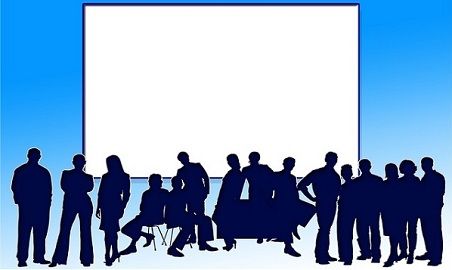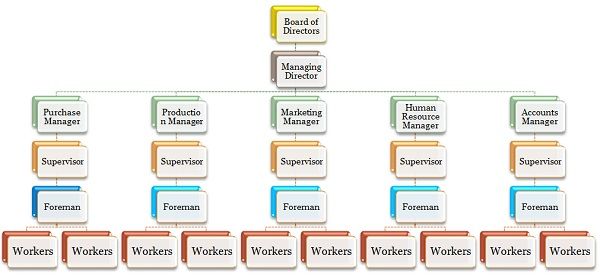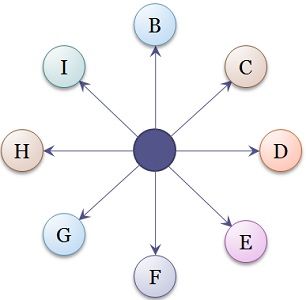 Someone said correctly “The very attempt of, not to speak, speaks a lot.”Communication plays a crucial role in our life, as people interchange their ideas, information, feelings, opinions by communicating. Formal communication is one that passes through predefined channels of communication throughout the organization. On the contrary, Informal communication refers to the form of communication which flows in every direction, i.e. it moves freely in the organization.
Someone said correctly “The very attempt of, not to speak, speaks a lot.”Communication plays a crucial role in our life, as people interchange their ideas, information, feelings, opinions by communicating. Formal communication is one that passes through predefined channels of communication throughout the organization. On the contrary, Informal communication refers to the form of communication which flows in every direction, i.e. it moves freely in the organization.
Communication could be verbal – spoken or written, or non-verbal i.e. using sign language, body movements, facial expressions, gestures, eye contact or even with the tone of voice.
In an organization, there are two channels of communication – formal communication and informal communication. People often confuse between these two channels, so here we have presented an article which explains the difference between formal and informal communication network.
Content: Formal Communication Vs Informal Communication
Comparison Chart
| Basis for Comparison | Formal Communication | Informal Communication |
|---|---|---|
| Meaning | A type of verbal communication in which the interchange of information is done through the pre-defined channels is known as formal communication. | A type of verbal communication in which the interchange of information does not follow any channels i.e. the communication stretches in all directions. |
| Another Name | Official Communication | Grapevine communication |
| Reliability | More | Comparatively less |
| Speed | Slow | Very Fast |
| Evidence | As the communication is generally written, documentary evidence is present. | No documentary evidence. |
| Time Consuming | Yes | No |
| Advantage | Effective due to timely and systematic flow of information. | Efficient because employees can discuss work related problems, this saves time and cost of the organization. |
| Disadvantage | Distortion due to long chain of communication. | Spread of rumors |
| Secrecy | Full secrecy is maintained. | It is difficult to maintain the secrecy. |
| Flow of Information | Only through predefined channels. | Can move freely. |
Definition of Formal Communication
The communication in which the flow of information is already defined is termed as Formal Communication. The communication follows a hierarchical chain of command which is established by the organisation itself. In general, this type of communication is used exclusively in the workplace, and the employees are bound to follow it while performing their duties.
Example: Requests, commands, orders, reports etc.
The formal communication is of four types:
- Upward or Bottom-up: The communication in which the flow of information goes from subordinate to superior authority.
- Downward or Top-down: The communication in which the flow of information goes from superior to subordinate.
- Horizontal or Lateral: The communication between two employees of different departments working at the same level.
- Crosswise or Diagonal: The communication between the employees of two different departments working at different levels.
Video: Formal Communication
Definition of Informal Communication
The communication which does not follow any pre-defined channel for the transmission of information is known as informal communication. This type of communication moves freely in all directions, and thus, it is very quick and rapid. In any organization, this type of communication is very natural as people interact with each other about their professional life, personal life, and other matter.
Example: Sharing of feelings, casual discussion, gossips, etc.
The informal communication is of four types:
- Single Strand Chain: The communication in which one person tell something to another, who again says something to some other person and the process goes on.
- Cluster Chain: The communication in which one person tells something to some of its most trusted people, and then they tells them to their trustworthy friends and the communication continues.
- Probability Chain: The communication happens when a person randomly chooses some persons to pass on the information which is of little interest but not important.
- Gossip Chain: The communication starts when a person tells something to a group of people, and then they pass on the information to some more people and in this way the information is passed on to everyone.
Video: Informal Communication
Key Differences Between Formal and Informal Communication
The following points are substantial, so far as the difference between formal and informal communication is concerned.
- Formal communication is also known by the name of official communication. Informal Communication is also known by the name of grapevine.
- In formal communication, the information must follow a chain of command. Conversely, the informal communication can move freely in any direction.
- In formal communication, full secrecy is maintained, but in the case of informal communication maintenance of secrecy is a very tough task.
- Formal communication is written, whereas Informal communication is oral.
- Formal communication is time-consuming as opposed to Informal communication, which is rapid and quick.
- Formal communication is more reliable than Informal communication.
- Formal communication is designed by the organization. Informal communication starts itself due to the urge of ‘human to talk’.
- In formal communication, the documentary evidence is always available. On the other hand, in the case of informal communication, the supporting documents are not available.
Video: Formal Vs Informal Communication
Conclusion
A very deep discussion on the difference between formal and informal communication has been done in this article. Nowadays, many big Transnational Organizations has started an open-door policy, in which any employee of any department can communicate directly with the head of an organization, about their complaints, grievances, and requests. This results in reducing the complexity of the formal communication.











pushpraj singh says
Really useful article.
kazim says
Thanks for info.
Mohamed younus says
Useful information.
GWAMAKA Geofrey says
Thank you
johnny says
Thanks for your help, this is what I needed.
Arjun says
Useful article, Good stuff!
anharitta says
this helped a lot thank you so much 🙂
Rohim Badsha says
It is a source of knowledge. Thanks to them who are working it. May ALLAH bless u all.
Surbhi S says
Thanks for your appreciation and blessings as well.
Graciete Antonio says
This article is helping me a lot with my assignment, it is very good and had been explained really very well.
santhosh .T says
This article is useful to me
Thank you
Waseem says
Thank you
Jon Suisse says
Thanks
Clarissa says
This was really useful, thank you. Helped a lot with the assignment i had to do.
T M Maung says
Keydifferences so far I’ve read are very useful. Thanks.
Surbhi S says
Thank you, everyone, for showing your love in the form of comments. We are really pleased to know that it somehow helped you. Keep visiting, and sharing. 😀
Katey says
This text was interesting and useful for my completion of this course; thank you.
Etakah says
very helpful information.
Etakah says
This is exactly what I needed for my assignment. Thank you very much its helped me a lot.
Nirmal joseph says
Thanks .. for providing accurate information
lana says
When I read this I felt enlightened beyond recognition. THANK YOU SO MUCH GOD you have saved another soul
Raghav Jha says
Thanks .. for providing accurate information
Mugdha S says
Dear Surbhi,
The information is really very helpful, thank you.
Also may I use the figures for my assignment?
Surbhi S says
Yes you may
Ramunas says
Helpful information for my apprenticeship. Thank You.
Washington Chikonzo says
simple and clear information. thanks
Antima Tiwari says
Thanks a lot for helping me along with that whatever you present I’m reading all the explanation a very perfect article, whatever you write so thanks once again.
Kate D says
A clear explanation of formal and informal communication. Thank you.
Kazama says
Thanks for help😘😘😘
poblo says
cool
Kartik kalal says
I read your article it’s too good.
Md Murshid Alam says
Nice video
Marian says
Thank you your information was very helpful
Jenny says
Very informative.
vanielle scott says
Thank you for all the info . great
vanielle scott says
Great way to explain , thanks
Sankar says
very useful video and topic for exam side also. 🙏
Tim Jackson says
thanks, very good
Tim Jackson says
thanks , great information
Kayla Berry says
The assignment is very helpful for my assignment. Thank you
Unknown says
good one